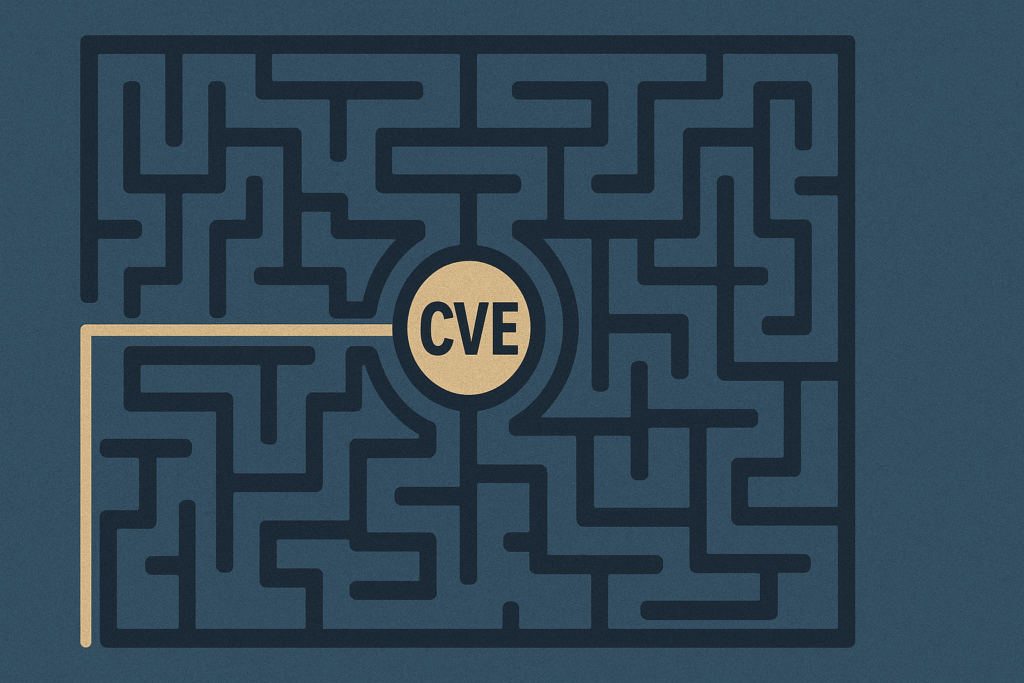When a new CVE (Common Vulnerabilities and Exposures) emerges affecting software, operating systems, or devices within your infrastructure, it’s not just a technical notice, it’s a real security alert that demands a structured, swift, and technically sound response. A vulnerability documented in a public database isn’t just a theoretical risk; in many cases, it signals imminent automated or targeted attacks ready to exploit the exposure window before a patch is deployed or mitigation measures are enforced.
The first step is not to blindly apply a patch, but to verify whether the CVE actually applies to your environment. This means confirming whether the exact software version, firmware, or operating system mentioned matches what’s deployed. Many organizations lack real-time visibility into the versions running across their assets, leading to incorrect decisions or missed vulnerabilities. This is where having an updated inventory through CMDB tools or vulnerability scanners like Nessus, OpenVAS, or Qualys becomes essential.
Beyond versioning, you must also check the model and manufacturer. In networking hardware, servers, IP cameras, embedded systems, or proprietary platforms, a CVE might only apply to certain models or specific configurations. That’s why it’s crucial to review the official vendor advisory, often linked directly from the CVE entry. These advisories detail the affected models, required conditions for exploitation, and vendor-suggested actions—firmware updates, configuration changes, temporary containment, or compensating controls.

The technical analysis of the CVE should assess its real-world impact: type of vulnerability (RCE, LFI, CSRF, privilege escalation…), CVSS score, exploitation complexity, need for prior authentication, user interaction, or exposure to public networks. You also need to check whether public exploits exist, available in platforms like Exploit-DB, GitHub, Metasploit, or integrated into offensive tools like Burp Suite, Cobalt Strike, or even Shodan. If an exploit is public and functional, the risk escalates dramatically, even if the CVSS hasn’t yet been updated to reflect that.
Once confirmed, trigger your organization’s vulnerability management process, in line with ISO/IEC 27001:2022, NIST 800-53, or TISAX standards. This involves formally logging the CVE, opening a task in your risk or ticketing system, identifying affected assets, assigning technical ownership, calculating risk (based on severity and exposure), and defining a response timeframe. This process must be traceable and auditable.
Then, check whether a vendor patch or validated workaround is already available. If a patch exists, it must first be tested in controlled environments before production deployment. Compatibility, functionality, and business impact must be evaluated. In critical infrastructures, live patching may not be viable, so maintenance windows or compensating controls should be scheduled.
If no patch exists, move to containment strategies: isolate the system (via VLANs or firewall), disable vulnerable services or features, adjust configurations to mitigate the attack vector (e.g., disable external auth, APIs, or exposed ports), or even temporarily disconnect the asset if the risk outweighs operational needs.

A crucial but often neglected task is searching for Indicators of Compromise (IOCs). Many actively exploited CVEs have associated IOCs published by CERTs, CISA, or vendors. Retrospective threat hunting should be performed via log analysis, SIEM queries, and EDR telemetry to detect any exploitation attempts prior to disclosure. If the CVE is listed in the CISA KEV (Known Exploited Vulnerabilities), assume active exploitation and investigate immediately.
Don’t forget to check for indirect dependencies. Your system might not explicitly include the vulnerable software, but it could depend on a library, container, or third-party module that does. Tools like Trivy, Grype, or Snyk are useful for scanning Docker images and SBOMs for hidden vulnerabilities. This is especially critical in DevSecOps pipelines and CI/CD environments.
Every step must be documented: from the initial technical review and risk analysis to mitigation or patch deployment and post-action verification. Documentation is not just about compliance (for ISO, TISAX, ENS, etc.), it helps build institutional memory, supports audits, and enables future improvements in incident response times.
Another important aspect is communication, both internal and external. If the CVE affects services used by customers or third parties, assess whether an advisory or mitigation instruction should be issued. If the impact is internal and under control, this can be omitted. But if there’s potential impact on SLAs, data confidentiality, or service integrity, incident communication protocols must be triggered, especially in regulated environments.
In short, the discovery of a CVE in your infrastructure isn’t an abstract warning, it’s a concrete operational alert that demands technical response, structured management, and strategic oversight. You can’t rely on antivirus or firewalls alone. Real security comes from proactive vulnerability intelligence, disciplined processes, and a culture that understands cybersecurity as a living, continuous practice—not a one-time setup.
